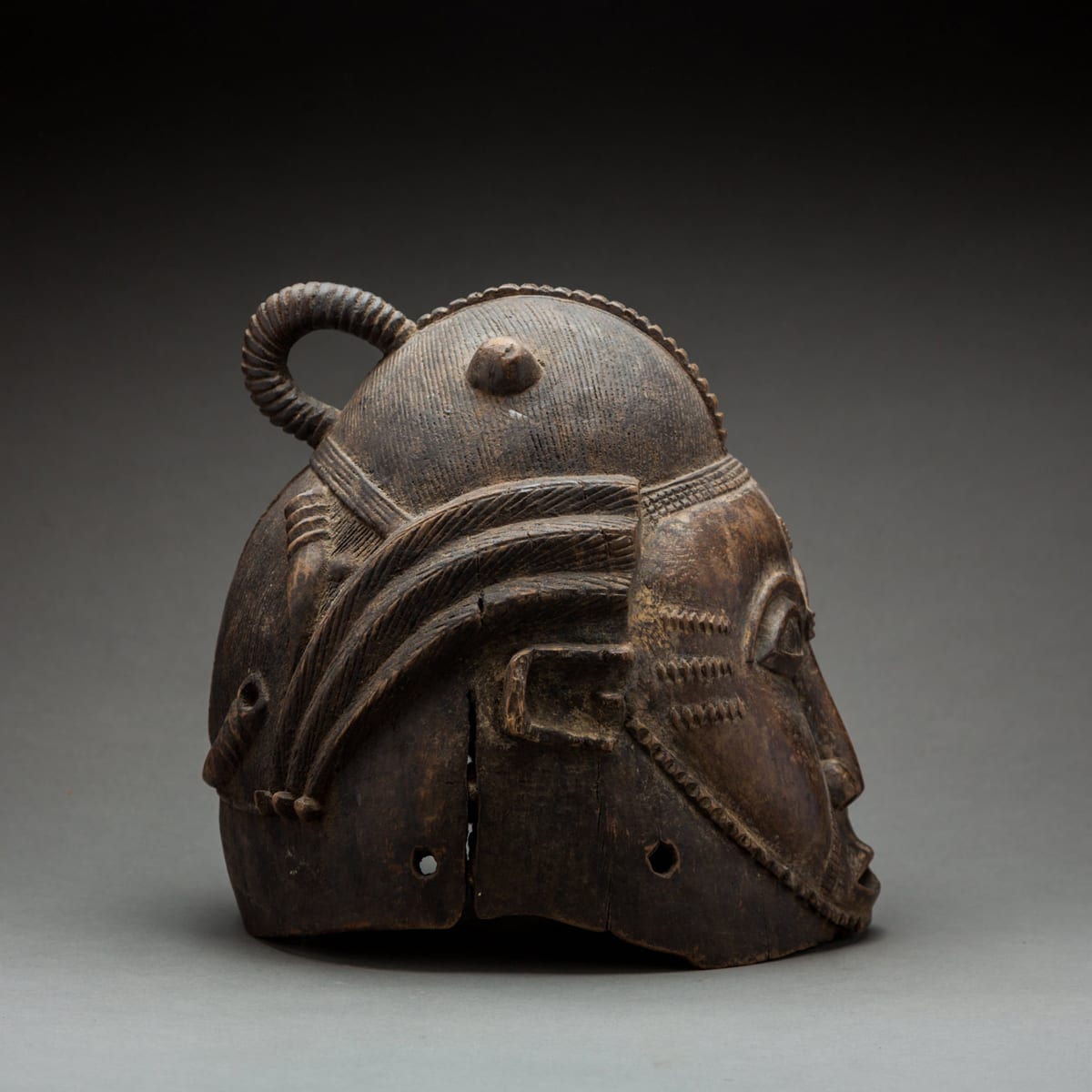Baule Wooden Helmet Mask, 20th Century CE
Wood
height 26 cm
height 10 1/4 in
height 10 1/4 in
PF.6016
Further images
This helmet mask belonged to the male society responsible for performing various rituals that maintained social stability and political order. Originally, the mask would have covered the upper portion of...
This helmet mask belonged to the male society responsible for performing various rituals that maintained social stability and political order. Originally, the mask would have covered the upper portion of the dancer’s head. A covering of cloth or raffia fibers would have been attached to the holes along the rim and would completely disguise the dancer’s identity. The elaborate coiffure has been intricately represented, as has the keloid scarification that was considered a symbol of prestige. Certain marks, like the rows along the temple and where the eyebrows meet the nose are representative of the Baule tribe and would have been instantly recognized as such. With the aid of such a mask, the people hoped to influence supernatural powers, an extremely dangerous spirit that can harm humans; but can also ensure their survival. Due to their influential powers, these masks were handled with extreme caution, then only during the ceremonies, and were absolutely kept out of sight of all women. While today the cultural stigma attached with this piece has faded, its power is still as vibrant as it ever was. This mask, once imbedded with such significant strength, still resonates an energy accumulated from years of worship. Holding this marvelous carving, a privilege formerly bestowed upon only the highest members of the social order, and then only for the most important ceremonies, remains a privilege today. In our hands, the strength of the yu continues to flow through our entire being.









